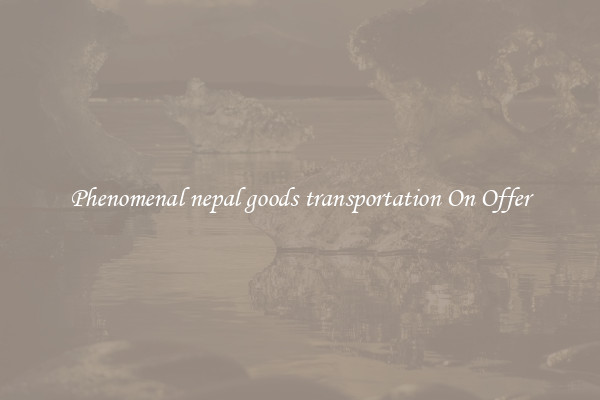Phenomenal nepal goods transportation On Offer
Nepal, a landlocked country located in the Himalayas, is known for its majestic landscapes, rich cultural heritage, and warm hospitality. However, one aspect of Nepal that often goes unnoticed is its exceptional goods transportation system. Despite its challenging terrain and lack of infrastructure, Nepal has managed to develop a phenomenal goods transportation network that ensures goods reach their destinations efficiently.

The transportation of goods in Nepal is primarily dependent on its road network. While the country's road infrastructure is not as developed as in other countries, it is still remarkable considering the geographical challenges it faces. The mountainous terrain and unpredictable weather conditions make constructing and maintaining roads a formidable task. However, the government and various non-governmental organizations have invested significant efforts to ensure effective road connectivity across the country.
Nepal boasts a wide range of goods transportation options, ranging from small tricycles delivering goods in urban areas to large trucks carrying heavy loads across long distances. The key to Nepal's successful goods transportation system lies in the resilience and determination of its people. Local drivers and truck owners are experts at maneuvering through narrow, winding mountain roads, ensuring that goods are transported safely and efficiently.
Moreover, Nepal offers a unique mode of goods transportation - the iconic "jugaad." Jugaad refers to the improvised vehicles used in Nepal, often constructed from scrapped automobile parts. While they may look unconventional, jugaad vehicles are widely used and have proven to be highly effective in Nepal's hilly terrain. These vehicles, typically three-wheelers or modified jeeps, are capable of transporting goods to remote areas where conventional vehicles cannot reach.
Nepal also benefits from its strategic location between two economic giants, India and China. This geographical advantage has opened up lucrative trade opportunities for the country. Nepal serves as a crucial transit route for goods being transported between these two economic powerhouses. The easy accessibility to these markets has further boosted Nepal's goods transportation industry, attracting more investment and fostering economic growth.
Furthermore, the adoption of modern technology has greatly enhanced the efficiency of Nepal's goods transportation system. Mobile applications and online platforms have emerged, enabling businesses and individuals to access and monitor transportation services. These digital innovations have streamlined the process of goods transportation, allowing for real-time tracking, faster delivery times, and improved customer satisfaction.
In conclusion, Nepal's goods transportation system is nothing short of phenomenal. Despite the challenging terrain and limited infrastructure, Nepal has developed a highly efficient network that ensures goods are delivered to their destinations reliably. From the resilient truck drivers to the unconventional jugaad vehicles and the strategic location between two economic giants, Nepal's goods transportation industry is a testament to the country's resilience and determination. As Nepal continues to develop and invest in its infrastructure, the future of its goods transportation system looks even more promising.

View details

View details

View details

View details







